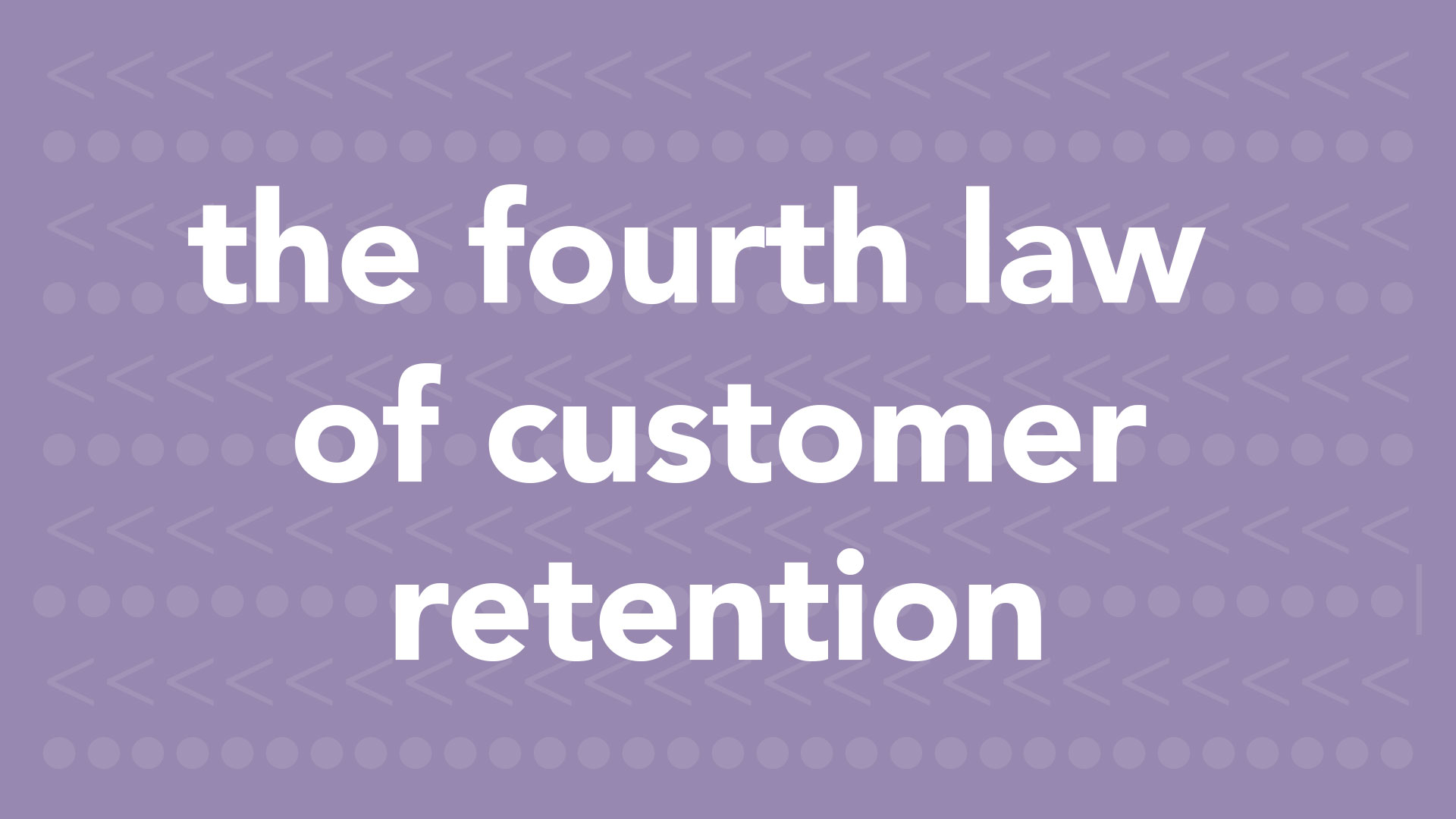Published by
Cross-Channel Messages are the Attraction Forces that Influence Organic Product, Service Discovery & Repeat Customer Visits
In the first two laws of customer retention, we focused on determining the probability of retaining a customer and the retention pulse of an experience to enable us to easily monitor its health. In the third law of customer retention, we explored the influence that retained customers have on the organic growth of new customers and a method to measure the level of its influence.
In the fourth law of customer retention, we will expand our focus to encompass the effects of a business’s cross-channel engagement messages on the level of retention seen inside a customer experience. Whether the effects turn out to be positive or negative is determined by the offer presented to said customer and the path the message sends the person down. If a business sends out unengaging or irrelevant offers to their customer base, we could expect to see a low number of visits generated by these customers from the messages received. Further, if the experience the person has to go through after clicking an engagement message is cumbersome and friction-filled, you might also see a low percentage of customers taking action.
Both the visit (or session in the context of a digital product experience) and any value actions (ad view, transaction or productivity workflow in the context of a digital product experience) are important aspects to monitor when determining the effectiveness of cross-channel messaging campaigns.
In order to do this, we will need to keep track of all messages sent and the corresponding activity and actions that they generate. As you might know, this is only possible to track for those who have revealed themselves to a business by signing up for a free account or by previously making a purchase, for example. In practice, this typically requires special analytics tools to do this at scale. Let’s assume for now we do have this data available to us for analysis purposes.
If we began to look at slices of this data over defined time periods (daily, weekly or monthly for example – or even longer for certain experiences that have infrequent customer visits by nature such as car shopping), we can start to see how enticing the offers are in your cross-channel messages. By gathering this information, it will offer us the insight we need to make the inferences and conclusions that can help drive our decision making in the future. Let’s break this down.
Specifically, let’s compare the ratio of visits and value actions (ad view, transaction or productivity workflow) that started as a direct response to an engagement message (more than likely from a link inside an email, SMS, push or QR code) to the total messages viewed from the same body of people over the same time period. The attraction force present inside a business’s cross-channel engagement messaging can be described as follows:

Also, remember to exclude visits and value actions that might have been influenced by an engagement message, but not as a direct response from a message. This will help to remove subjectivity from the analysis. Clearly this will make it harder to score “great” on the evaluation spectrum. But don’t be too concerned with getting a perfect score of one as it is highly unlikely it will occur. Further, average and good on this spectrum will be heavily dependent on industry and customer segments. Social media apps might expect to see scores greater than 0.5 while a QSR app might be lucky to get north of 0.25 on average.
However, regardless of what industry you are in, this can serve as a solid and consistent benchmark to monitor the health of your cross-channel engagement messages and evaluate if a change you made was positive or negative.
Let’s assume for a minute we are managing a digital product in the social media space, which on average sees attraction forces north of 0.5 and currently our factors are at the following levels:

Now, let’s assume that we took action and made changes to our cross-channel engagement messaging and the resulting factors are now as follows:

It becomes quite clear how one can use these factors to monitor and improve cross-channel engagement messaging to drive higher retention outcomes. Visits are the leading indicator to a potential repeat customer and value actions are the retention gateway in the customer retention lifecycle customers must go through in order to become a retained customer per the second law of customer retention.
In summary, cross-channel engagement messages are the attractive forces that drive repeat visits and value actions within a business’s customer experience. This influence can be measured by looking at the number of visits and value actions that were started as a direct response to a received message as compared to the total number of messages viewed by the same body of customers. The two resulting factors will be a value that falls between zero and one; with one being the highest score and zero being the lowest. Finally, teams can use these factors and industry averages to determine where they stand on the spectrum and how any shifts can increase or decrease retention levels.
Share:
Categories
tags
Related Posts

AI and the Future of Restaurant Hospitality

The Value of Agency Project Managers


